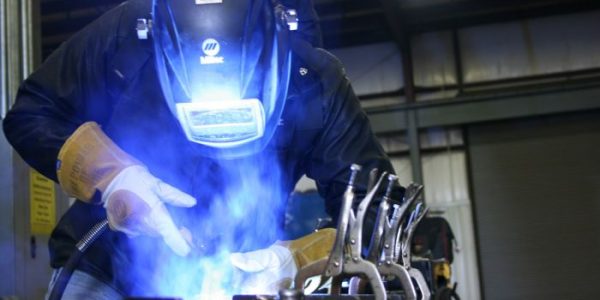Welding is one of the most difficult trades and it takes time and of course welding tips to learn how to do it.
Attention to detail and having a depth knowledge of all the factors that influence the quality of the final result are essential when it comes to this trade.
That is why it is so important to take theoretical lessons about the fundamentals of welding and training, and of course learn from experts (vocational training), if you want to start a career as a professional welder.
Anyway, in this article you’ll find some welding tips you need to remember if you’re a beginner:
1. Knowing the metal is essential.
Good welders need to have some metallurgic knowledge, that is, they should know the type of base metal and the electrode they are welding with, to understand the behaviour of the final bead.
2. Choosing the current.
The type of metal, together with the type of electrode, has a direct influence on the current (AC/DC) welders should use to perform a welding bead. So, you need to review the theory and try to do some practice on scraps with different settings.
3. Keep calm and relax your hand.
Relaxing the hand, specially the wrist, instead of holding the gun or the stinger too tightly is crucial for a good welder to have control over the weld pool and perform a good weld.
4. Striking the arc.
Striking the arc can be so difficult for beginners. The best thing is to strike the arc exactly at the starting point of the welding bead. It is a common and big technical beginner’s mistake to do it outside the weld joint, on a table or on a piece of scrap.
5. Removing slag.
Another major mistake beginners make is not removing the slag from a weld correctly, causing some problems like: very brittle weld, and also the weld can be covered with slag, making it difficult to judge the consistency of the underlying welding bead.
6. Keep it clean.
Not cleaning or grinding the impurities (grease, rust, oil, rust…) out of the weld joint can provoke a contamination of the weld.
7. Find a Welding mentor
Training is so important in the welding sector, and repeating exercises and welds is really efficient if you want to “automate” the basic processes, but having an experienced welder by your side really enhances the learning process. Experience is key in this sector, and a welding mentor can provide the advice that might get you to the next welding level.
8. Protect yourself with proper safety equipment
Welding can be dangerous for newcomers and even for experienced welders. It is really important to remain vigilant every time you need to perform a weld, and use the proper safety equipment according to the requirements of the situation. Make sure all the equipment is in a proper condition and that everyone around you (And specially you!) is safe. For more information, read our welding safety tips guide.
9. Decide which welding process to learn first
Welding training can be really complex if we take into account all the possible processes, positions, techniques, materials… The best way around it is to go step by step, choose the process you want to learn first and focus on it until you really dominate it before moving on to the next one, there is a long way to go!
10. Find the right travel speed
Haste is not a good companion, specially when it comes to welding. Finding the right speed is one of the keys of welding training, a good welder knows exactly the speed he needs to follow according to all the features of the weld to perform.
As you can see, welding can be a complex discipline to master, it depends on many different processes, materials, positions, equipments… But with the right training, equipment, technology and trainers by your side, it can be way easier. If you would like to see how companies like Volkswagen or Siemens are already applying new technologies to their welding training programs, click here




